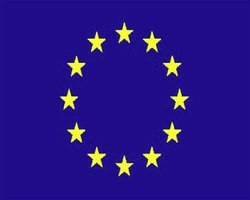The European Central Bank’s Governing Council decided on January 9th to keep its three interest rates unchanged – the interest rate on the main refinancing operations at 0.25%, on the marginal lending facility at 0.75%, and the deposit facility at 0.00%.
Mario Draghi, President of the European Central Bank (ECB) said:
“Underlying price pressures in the euro area are expected to remain subdued over the medium term. In keeping with this picture, monetary and credit dynamics remain subdued. At the same time, inflation expectations for the euro area over the medium to long term are firmly anchored in line with our aim of maintaining inflation rates below, but close to, 2%.”
“Such a constellation continues to suggest that we may experience a prolonged period of low inflation, to be followed by a gradual upward movement towards inflation rates below, but close to, 2% later on. Against this background, the Governing Council strongly emphasizes that it will maintain an accommodative stance of monetary policy for as long as necessary, which will assist the gradual economic recovery in the euro area.”
“Accordingly, we firmly reiterate our forward guidance that we continue to expect the key ECB interest rates to remain at present or lower levels for an extended period of time.”
Eurozone’s overall economy still weak
Draghi added that the ECB’s policy is based on an overall lower inflation outlook extending into the medium term, given the subdued monetary dynamic and broad-based weakness of the Eurozone’s overall economy.
The ECB is ready to consider all available instruments at its disposal if money market or other economic conditions change. The central bank’s president says he and his team are monitoring developments in the euro area closely.
Draghi added “Overall, we remain determined to maintain the high degree of monetary accommodation and to take further decisive action if required.”
In a news conference, Draghi announced the following highlighted economic data regarding the Eurozone:
- Real DGP rose by 0.1% in Q3 2013 compared to the previous quarter.
- In the second quarter, real GDP had risen by 0.3%.
- Industrial production in Q4 2013 started weak, and picked up slightly in December, a positive sign regarding the gradual recovery in economic activity.
- Output during 2014 and 2015 is expected to recover as domestic demand picks up, partly thanks to the accommodative monetary policy stance of the ECB, albeit at a slow pace.
- Greater demand for Eurozone export products should also help boost economic activity.
- The overall improvements in the financial markets since the summer of 2012 seem to be working their way through into the economy.
- Lower energy price inflation has boosted personal incomes.
Unemployment in Eurozone still a major problem
However, unemployment remains stubbornly high, while at the same time “the necessary balance sheet adjustments in the public and the private sector will continue to weigh on economic activity.”
The risks that could undermine the economic outlook for the Eurozone continue to be on the downside. Draghi said “Developments in global money and financial market conditions and related uncertainties may have the potential to negatively affect economic conditions. Other downside risks include higher commodity prices, weaker than expected domestic demand and export growth, and slow or insufficient implementation of structural reforms in euro area countries.”
The Bank of England left its benchmark interest at 0.5%, a record low. The UK central bank’s interest rate has remained at 0.5% since March 2009.
Eurostat, the EU’s statistical agency reported that the inflation rate in the Eurozone dropped to 0.8% in December, well below the ECB’s target of slightly below 2%. A growing number of economists are now wondering whether Europe is entering an economically harmful Japanese-style deflationary period.

